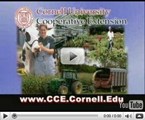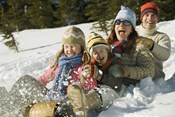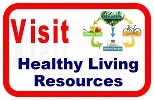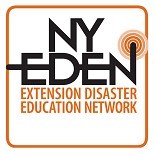Sliding down a snow-covered hill is a lot of fun for children and adults alike. This can be an excellent outdoor activity for the whole family. But, without proper safety practices, injuries can happen. Paramedics attend too many tobogganing injuries; and many of those injuries have been as serious as severe head injuries and broken backs. Tobogganing is fun, but teach your children to do it safely.
Skiing, tobogganing, and sledding are all subject to the prevailing weather conditions. Commercial ski areas often post the conditions so that skiers can use the appropriate equipment, waxes, etc. Unfortunately, family tobogganing, sledding, and some skiing tends to take place in less formal settings on local, unregulated hills. Safety standards often rest in good judgment and experience. Here are some tips to help stay safe in the snow:
Helmets will reduce the chance of a head injury when skiing, tobogganing, or sledding. There is no approved tobogganing helmet, but it is known that a hockey helmet is not adequate; a bicycling helmet is more appropriate because it protects against one major blow- after which it must be replaced.
When hills are very icy, they allow sleds to travel farther than they normally would. Therefore, make sure that you are well aware of hazards at the bottom of the hill that may be in the way even if normally sleds don’t reach them. Inspect the area where the child will be sledding or skiing. Make sure the path is clear of rocks, trees, poles, and other obstacles.
Be certain that children are dressed for winter conditions. Carefully consider wind chill factors, ice, snow melt, and slushy pools at the bottom of the hill. Will your child be warm and dry after a few runs down the hill? Don’t forget appropriate eye protection and sunscreen.
The sledding surface should be snow packed and not icy. Ice contributes to speed and increases hazards. Do no allow children to sled where they will run out onto the road. Fatalities have happened in this way.
Make sure the sled is in good condition with no broken parts. Don’t use a sled with splinters or protruding hardware.
When sledding or tobogganing, riding in a prone position (lying down and head first) can increase the chance of head and abdominal injury; therefore, the child’s head should be at the back of the sled and covered with a helmet. Sitting is a better position.
Teach children how to stop when sliding down snowy hills. Sleds frequently have a breaking mechanism, though toboggans do not. Always keep in mind that toboggans can be highly uncontrollable devices. Make sure children know the difference between going down a hill fast and going down a hill out of control. Speed can kill.
Finally, Instruct children to wait their turn and do not go until their path is clear of other sledders or dogs. Have them walk up the hill to the side, far from the path of other people sledding down.





